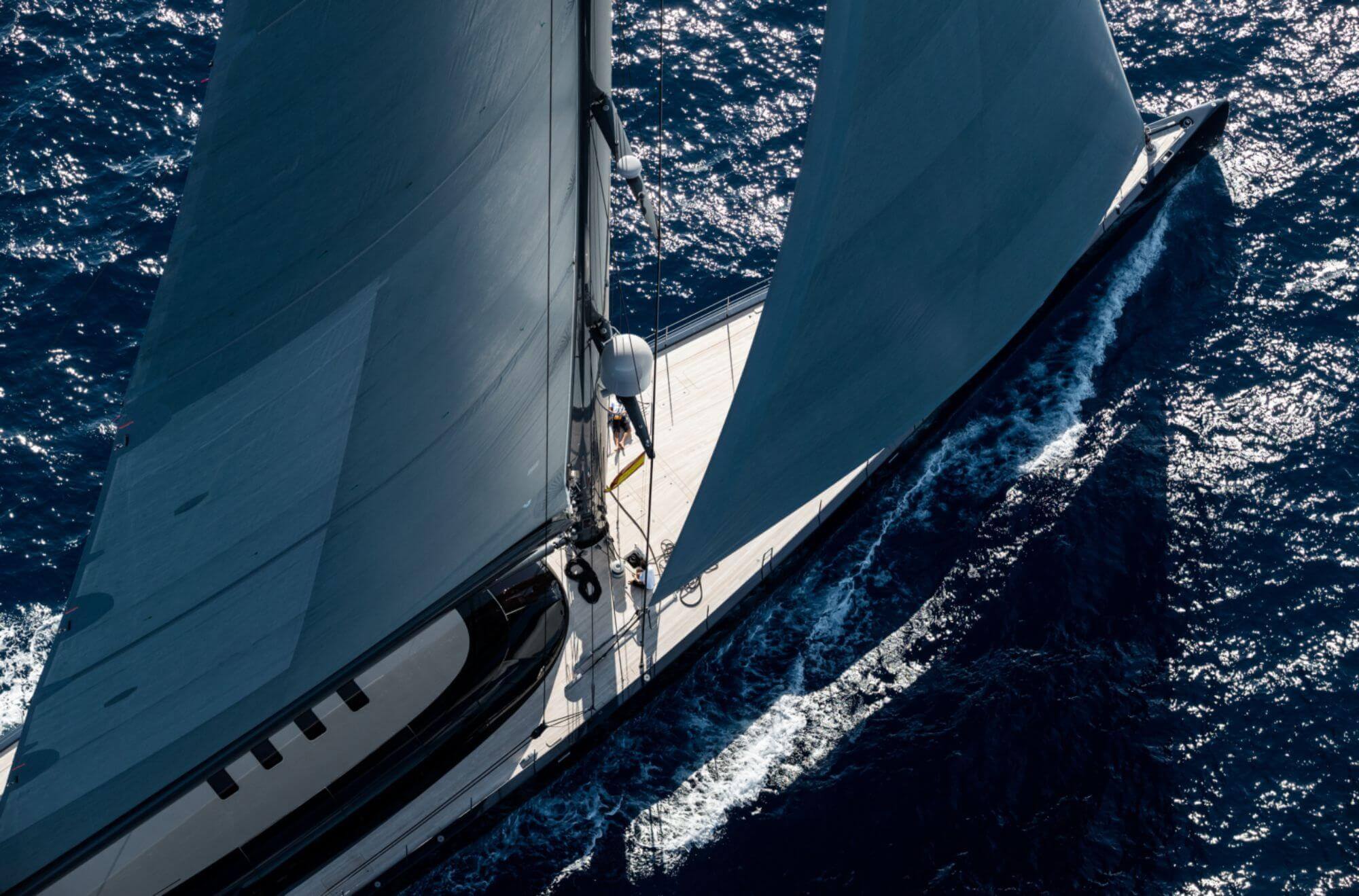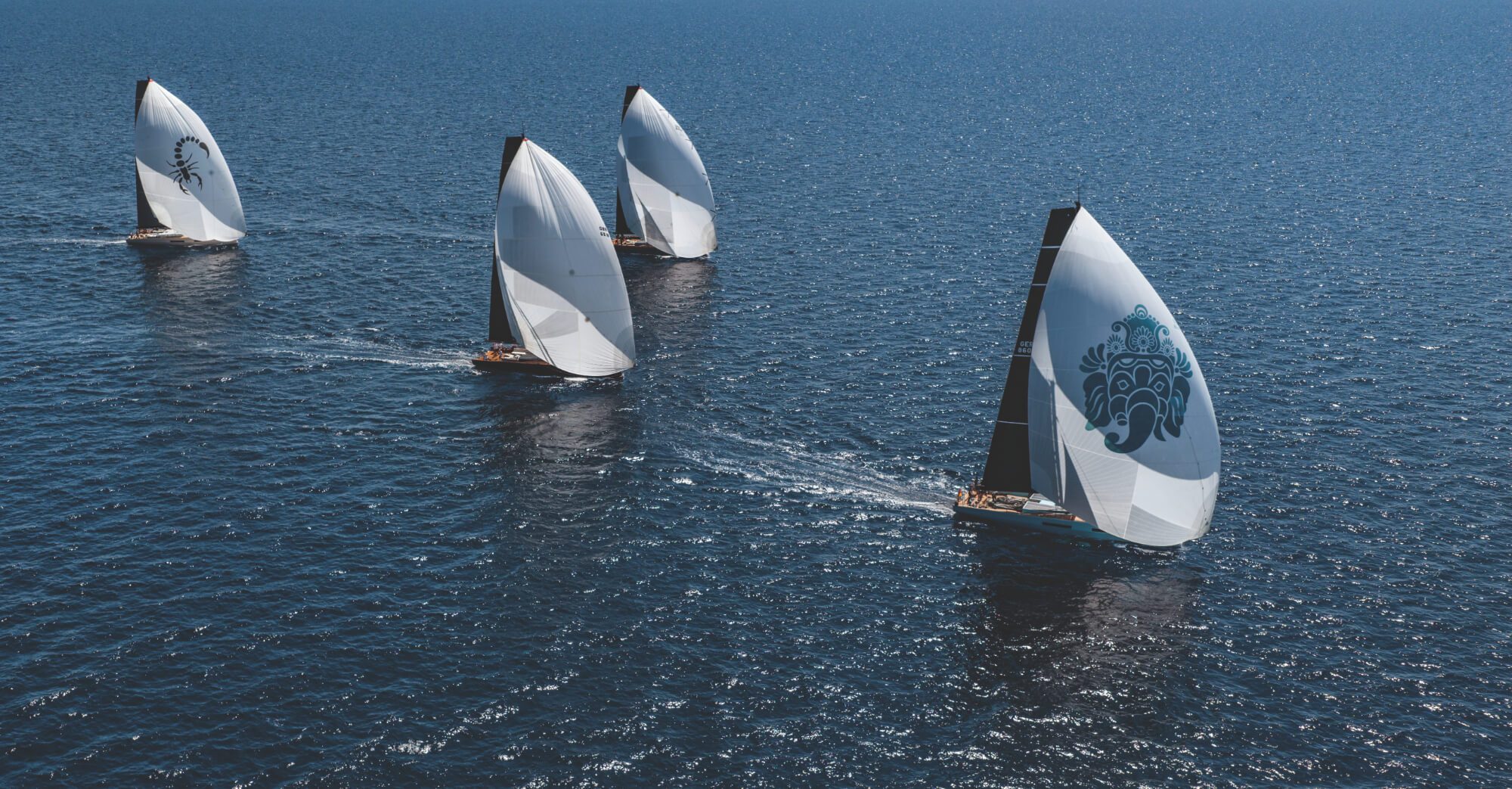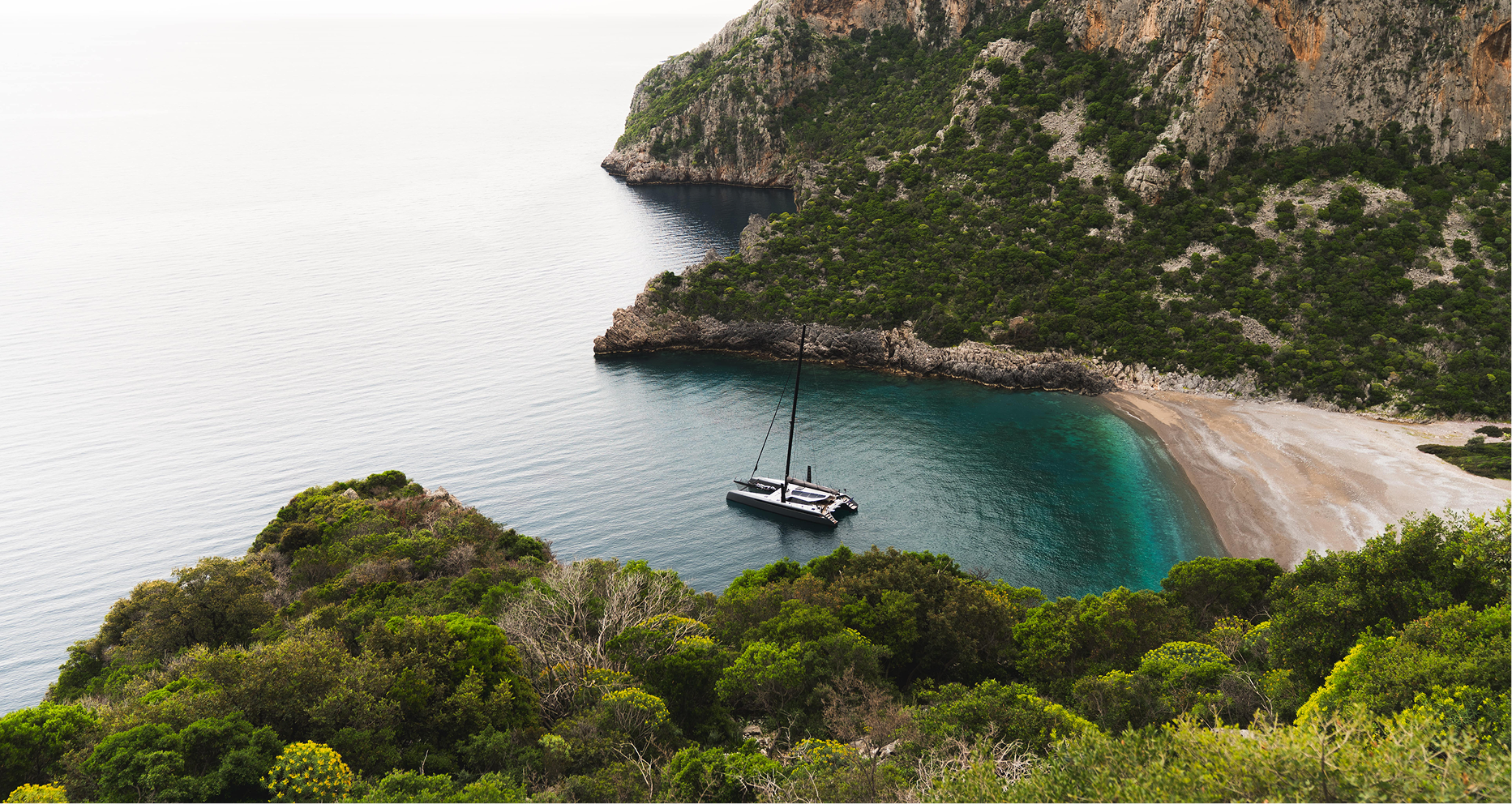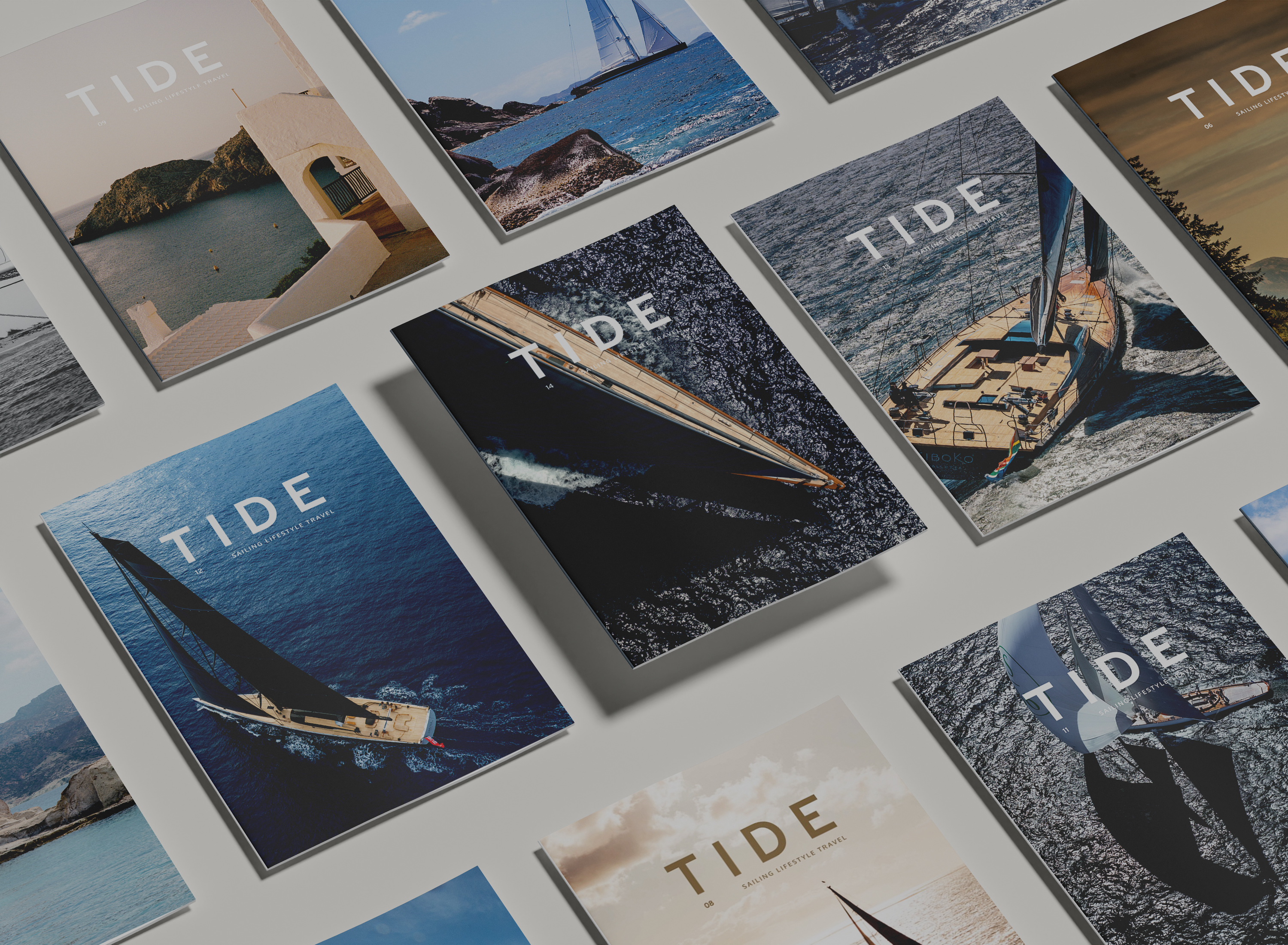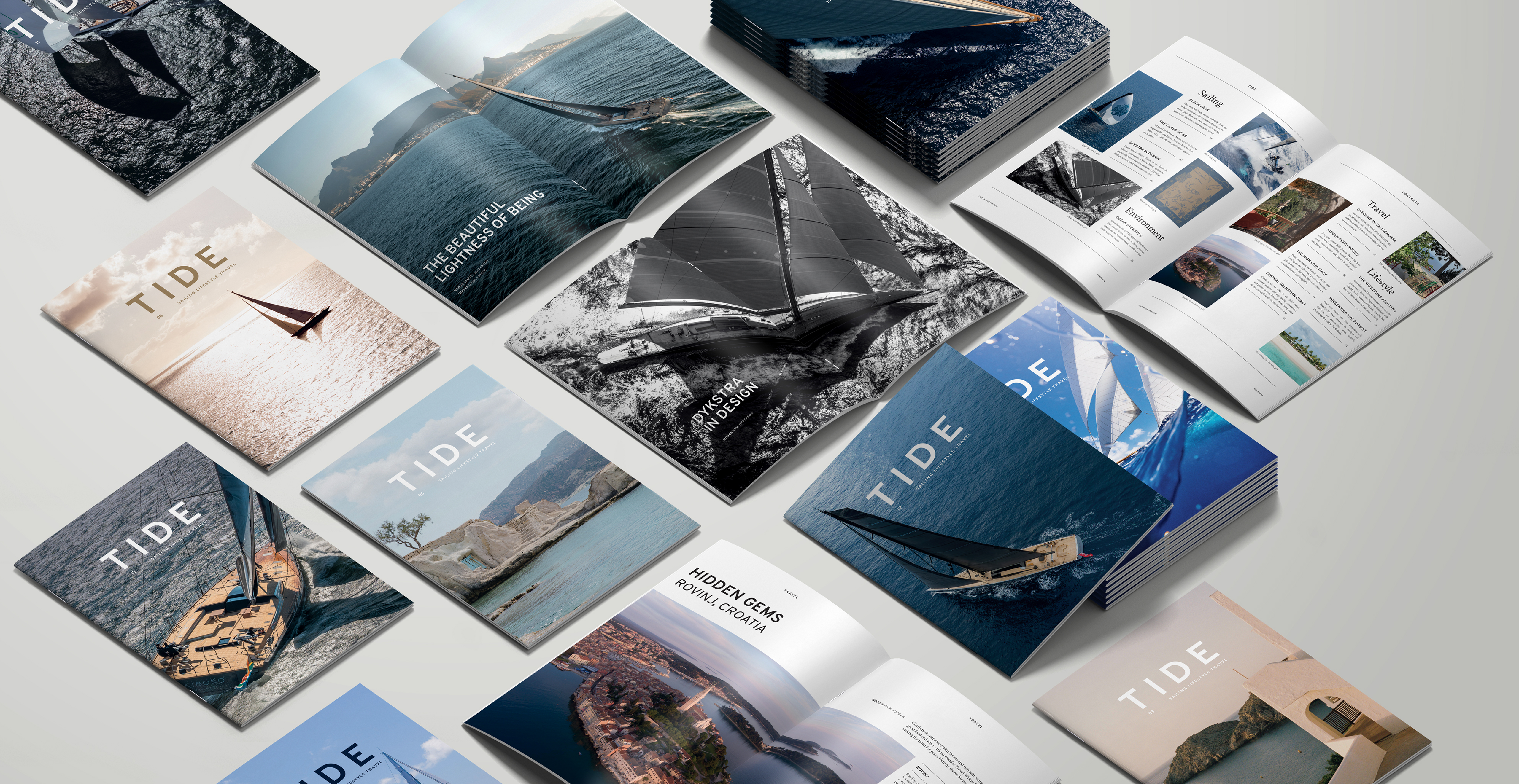The super sloop, the apex of sailing superyachts?
If the enduring arms race in the motor yacht world is anything to go by, bigger is better when it comes to luxury yachting. But it’s not just motor yachts that are increasing in size; the rise of the super sloop is shaping our horizon.
Tracing its origins back to the evergreen and ever-graceful J-Class, the large ocean going sloop is continuing its evolution. The industry has witnessed some impressive launches of late, with even more impressive new builds in progress and several bold concepts on the table. But a main focus for many of the world’s leading designers and builders has been to create ever larger sailing machines for ever discerning owners.
Malcolm McKeon Yacht Design, Royal Huisman and Southern Spars are amongst those leading the charge with the next generation of super sloops. It all began in 2014 when Royal Huisman and Dubois Naval Architects were challenged by a client to “Build me a beast!”. The subsequent 2017 delivery of Ngoni set a new standard. At 58m on deck she joined the super sloop ranks of 66m Ahimsa (ex Aglaia) and 88.5m M5 (ex Mirabella V). Today, several concepts from the likes of Tony Castro, Reichel Pugh/Nauta and Malcolm McKeon are tabled, all 60m+ with the addition of McKeon and Royal Huisman seriously offering the 85m Apex 850.
Size brings the obvious benefit of greater interior space, but exactly why are owners pushing the envelope to such extremes? “These are not first-time yacht owners” explains McKeon, who believes the performance potential of larger yachts leads to a world of opportunities for experienced and long standing sailors. “Around 90 per cent of owners begin the process with racing furthest from the agenda, but almost all change their mind!”
The plethora of superyacht regattas prove an irresistible temptation. With the Offshore Racing Congress’ Superyacht Rule catering specifically to yachts over 30m, the advantages of up-sizing opens the door to some serious competition. Add to that the inherent performance benefits of the high aspect sloop rig and its simplicity compared to ketches or schooners, and the draw of the super sloop starts to make sense.
The thrill of racing coupled with exclusive social events makes for an unbeatable atmosphere of fun and camaraderie. Numerous regattas from the Mediterranean to the Caribbean have become permanent fixtures in the yachting calendar. “There are almost too many,” says McKeon, whose designs, such as 33m Missy and 32.5m Ribelle, are regular attendees.
The ‘multi-role’ aspect of the yachts and ease of handling a sloop sail plan (both shorthanded and with a full complement of race crew) means these thoroughbreds are no one-trick ponies. But if the demands of multi-role performance cruisers aren’t enough, there is growing demand for ever complex systems onboard, too.
“The environmental impact of yachting is increasingly important to our clients, and almost every project now includes some degree of green technology as part of the brief,” says McKeon.
Royal Huisman also sees a growing trend in the demand for hybrid and diesel-electric options. “Our client demographic has not changed significantly,” says CEO Jan Timmermans, who supports McKeon’s experience of super sloop owners being serial builders. “But we do see a shift towards longer stays on board and pristine destinations that make clients aware of the need to cut emissions.”
And Timmermans does not anticipate this trend stopping any time soon. A sailing rig alone doesn’t make for a zero emission vessel. The use of regenerative power and storage technology is becoming commonplace to cater for hotel-loads, sail handling winches and air-con. “We’ve been putting battery packs on boats for over 25 years,” says McKeon in response to being asked about onboard environmental awareness. Initially used to allow for ‘silent running’ periods for the benefit of guests, modern developments of these systems incorporate new generation technology and lighter, more compact battery packs to drive down emissions. Alongside it’s primary function of propelling a yacht under motor, a yacht’s propeller can now serve as a hydroelectric turbine generating electricity whilst travelling under sail.
Even more seismic is the improvements in overall efficiency in the new generation of sloops. In the pursuit of performance, McKeon and the team at Southern Spars are focused on the key elements of weight and windage. An attention to detail formerly reserved for racing yachts is now being used to drive efficiencies throughout the vessel. Lighter, stiffer hulls are more easily driven, more energy efficient and all-round better performers. Airconditioning is a large consumer of onboard energy and actively managing its use as well as improving onboard insulation can yield large energy savings. Less energy consumed means smaller generators, smaller fuel capacity required and, in turn, a lighter boat, further increasing the performance gains.
As the originators of the carbon rig, it’s no surprise that Southern Spars in New Zealand has zeroed in on how to harness such loads in a performance superyacht by refining the trifecta of design, rigging and manufacture. Most modern superyacht spars possess added functionality, such as furling mainsails and rafts of electronic, navigation and communications components. But Southern Spars’ ECsix continuous carbon fibre rigging is now used to deliver weight saving where it matters most; up high.
The use of thin ply carbon fibre for mast construction is also beginning to cross over the race/luxury divide. Achieving weight savings of up to 10 per cent in mast construction alone, the reduction of weight aloft has a pronounced effect on the characteristics of a sailing yacht. Reducing roll, both under sail and at anchor, as well as reducing the total weight of the vessel makes for a more comfortable and manoeuvrable yacht.
Such gains are not easily won, however, and Ngoni is a case in point. Supporting considerable compression and bending loads from the tall (75m) and powerful rig, Ngoni’s 58m hull is only 9.5m wide. The biggest challenge of such a low volume design was finding a way to offer sizable deck openings for tender storage, Jacuzzi and deck lockers.
“If it can be done simpler without sacrificing amenity or compromising class, then this is the preferred way,” says Timmermans. “It inspired the implementation of a company-wide ‘keep it simple’ strategy.”
Ngoni’s distinctive reverse sheer is perhaps the most visible feature of how the great loads from such a tall sloop rig are dealt with. A simple yet effective hull structure; the curve of the sheer resisting the forestay and backstay forces. For Royal Huisman, Ngoni’s apparent simplicity was made possible through innovative new solutions in the field of glass application, says Timmermans.
“Increasing glass surfaces is an ongoing development, as new technologies in and outside of the yachting industry enable us to realise our clients’ dreams and architects’ ever more futuristic designs.”
Futuristic is certainly one word to describe the new Apex 850 concept put forward by Royal Huisman and McKeon. In a bold move to continue the trajectory set by Ngoni, the Apex 850 would be the world’s largest sloop and the world’s largest aluminium sailing yacht. Concept designs show large expanses of glass on deck, full-height hull windows and a design that seeks to comprehensively redefine on-board lifestyle and sailing experiences.
Whether enjoying the fruits of evolved design and engineering, international competition or increased living space afloat, the super sloop seems the perfect outlet for experienced sailors and progressive thinkers alike. When asked how Royal Huisman approaches the challenges presented by increasingly large projects, Timmermans explains: “Our R&D team is in close contact with Classification to discuss and come up with solutions, which were thought to be impossible a few years back.”
Once thought to be impossible, now possible. The essence of the super sloop. The ever-rising benchmark. The current state-of-the-art.


